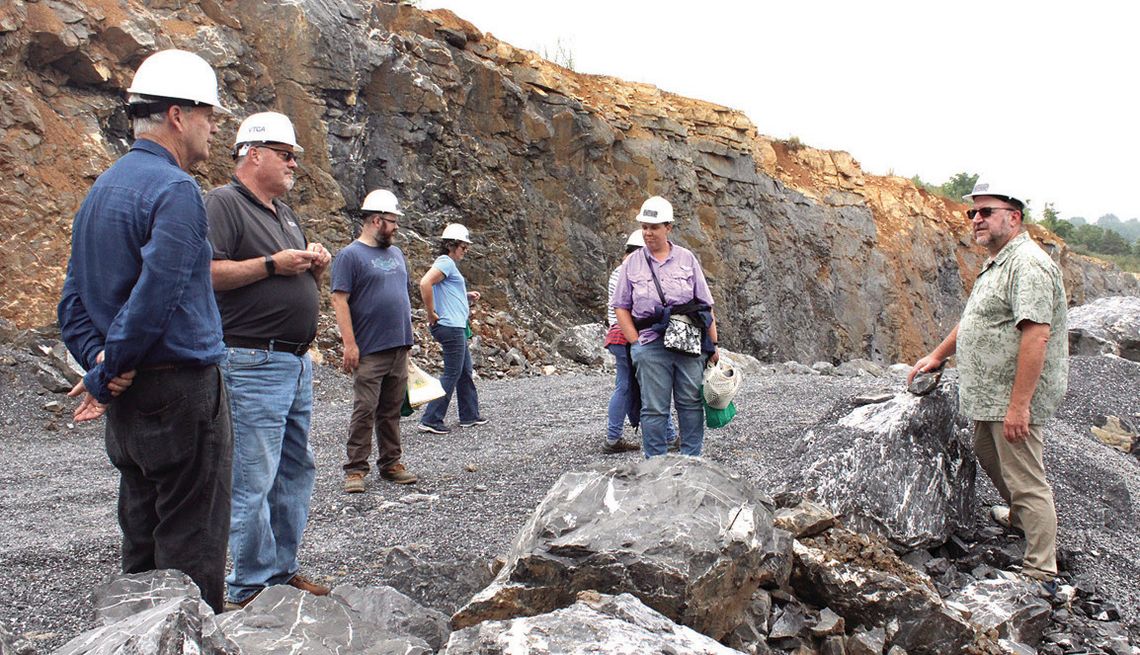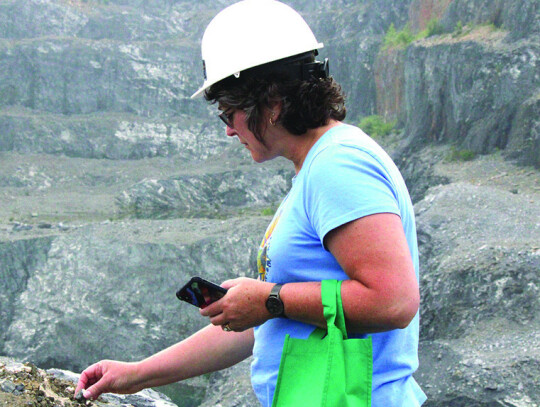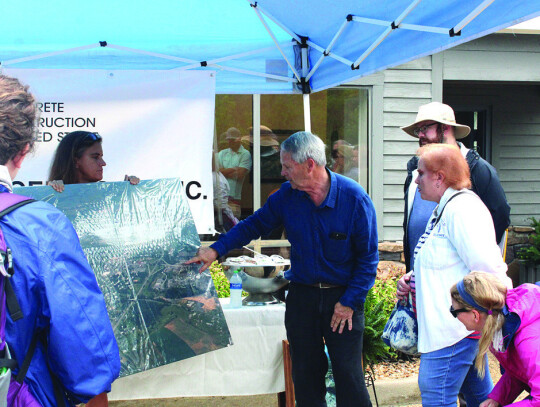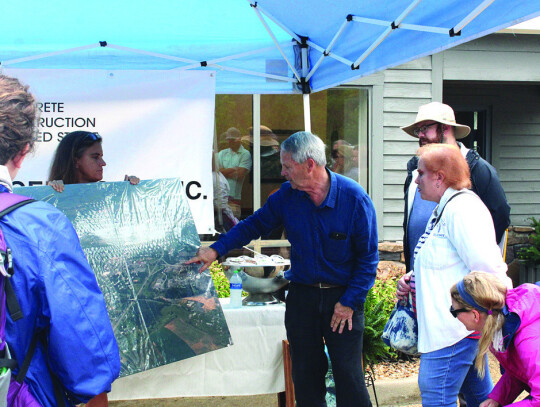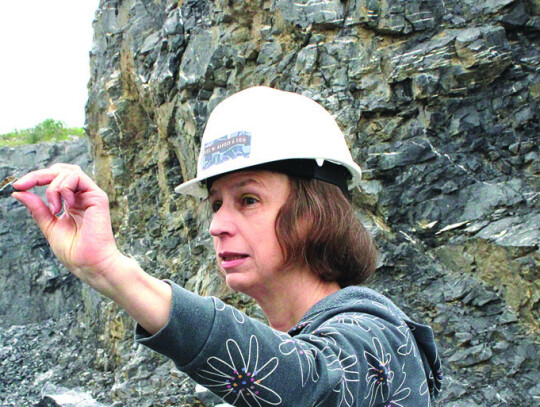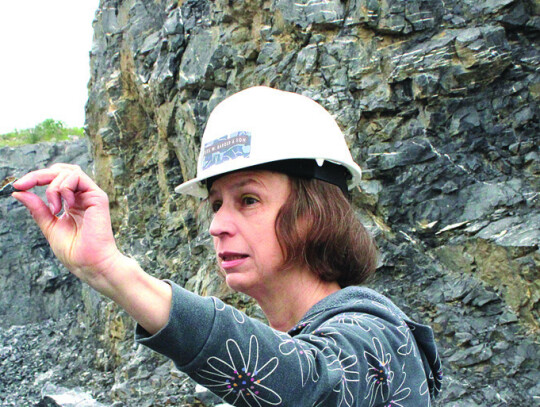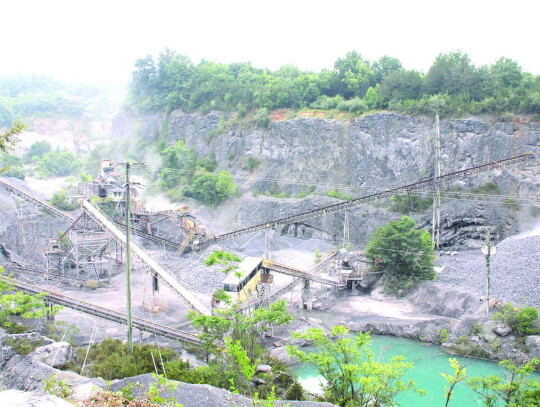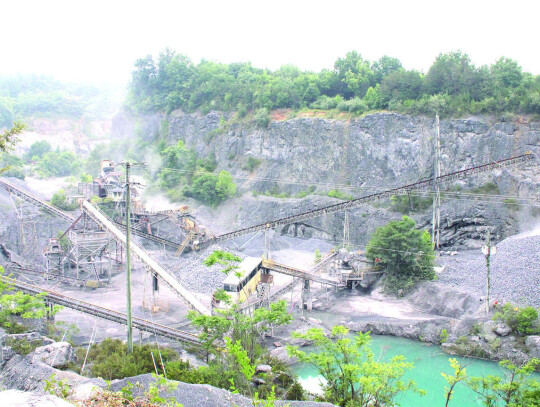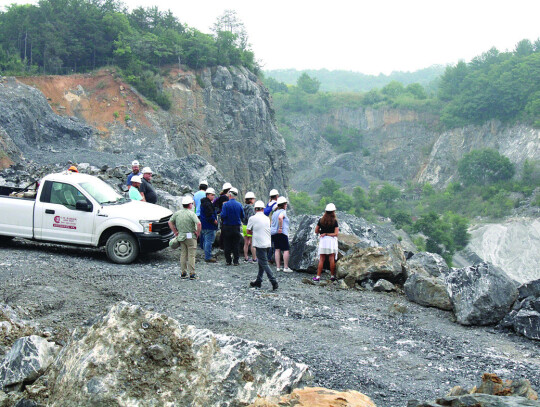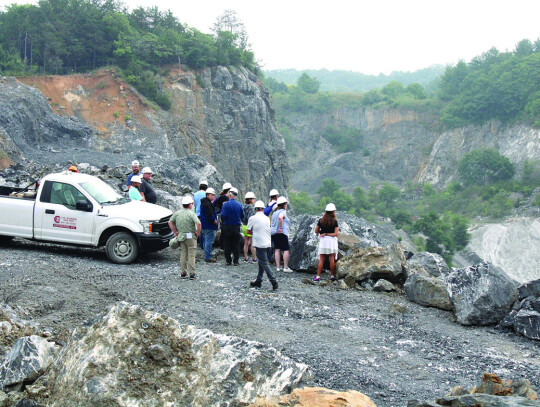Geologists, teachers, and earth science lovers were in awe as they scavenged Barger’s Quarry for pyrite, a mineral better known as “fools’ gold.”
On June 30, members of the Virginia Association of Science Teachers (VAST) were invited to Charles W. Barger & Son Inc. to learn about and explore Barger’s Quarry.
The “Rockin’ PD Quarry Tour” was collaboratively hosted by the Virginia Transportation Construction Alliance (VTCA) and Charles W. Barger & Son. VTCA promotes the manufacturing and maintenance of transportation in Virginia, but the group is also dedicated to promoting a public awareness of their operations.
The “Rockin’ PD” quarry tours are tailored towards teachers and are designed “as a practical source of STEM resources for classes in earth science, geology, and how local materials are used to construct highways, bridges, and buildings in our community,” president of the company, Charles W. Barger III, told The News-Gazette. “Most of us have little idea how quarries benefit the areas where they are located, so the tour gave us a stage the teachers can share with their students.”
Another priority of the VTCA mission is to establish a relationship between the public and aggregate plant workers, which will encourage an understanding of how quarries and aggregate operations are “good neighbors that operate clean, environmentally sound, and safe facilities that provide critical materials for the growth and maintenance of our communities,” according to the website of the Virginia Transportation Construction Alliance.
VTCA aggregate producer and program manager Rob Lanham partnered with Barger to guide the tour of Barger’s Quarry where Lanham was able to discuss the aggregate operations with the teachers. Alongside Lanham were representatives of the Virginia Department of Energy and Virginia Power – geologists Matt Heller and David Hawkins. They provided the tour-goers with literature and Virginia geological maps that gave insight into the geological formations within Barger’s Quarry.
At the tour, teachers from Hampton Roads, Charlottesville, Roanoke, Floyd, Harrisonburg, Fairfield, and Lexington joined together to delve into the quarry to admire its geology, to learn about its aggregate operations, and to understand its importance to the area.
The value of quarries has been resolute for over 2,000 years when Romans began using aggregate to construct roads, bridges and aqueducts, Barger explained to The News-Gazette. Quarries within Rockbridge County have been supplying the area with construction materials for about 100 years. Howard Donald opened the first site on the east side of U.S. 60 in 1922 after calcite, fluorite and unique forms of iron pyrite were found in Lexington. Later in 1932, ownership of the quarry transferred to the Barger family.
The original quarry began to fill with an excessive amount of water, motivating Charles W. Barger and Son to reestablish the quarry on the west side of U.S. 60. The new location of the quarry is ideal as it allows operations to be close in proximity to its market.
Barger explained, “… quarries, to be competitive, must be close to their markets, so quarries must also locate and operate close to people. For over 30 years, our quarry has operated less than 100 yards from the Food Lion Shopping Center. Stonewall Square was our former quarry until 1989, excavated from a limestone hillside.”
He continued, “Quarries are essential. People and quarries live next to each other every day. Stonewall Square [Shopping Center] is an excellent example of living next to a quarry while repurposing an old site.”
Maintaining a compatible relationship between civilization and the intense environment of a quarry is like walking a fine line, especially in such close proximity. To create the aggregate, 40 to 45 foot holes that are 4.5 inches in diameter are drilled into the rock and filled with explosives, Barger said. “[Updated] blasting technology has allowed us to reduce our shots from 40 to 50 times per year down to 10 to 12 time per year with the same or less effects upon neighbors,” he said. “We then take the shot rock to our crushers where they process the crushed stone into different sizes for use as asphalt, concrete, and driveways.”
Barger continued, “… Quarries live close to markets and therefore neighborhoods. When large trucks, blasting, dust, and noise are combined with people in close proximities, challenges arise. It is in the quarry’s best long-term interests to address the challenges and live in as compatible relationship as possible.”
There are significant benefits to having a quarry located within the county. Transporting materials is one of the most expensive aspects of aggregate operations, so having a nearby quarry reduces transportation costs. “… every building and road within 30 miles are substantially less in cost because of a local quarry. Transportation is the largest cost, so to remain competitive location is strategically critical,” Barger said.
Barger believes that modern society would not be what it is without the work of quarries creating crushed stone, concrete, and asphalt. He told The News-Gazette, “Whether you rent or own a property, attend school or church, or play on a golf course - (our Stuarts Draft sand is used under golf greens) – crushed stone is used in concrete foundations, structures, as well as the roads that lead to the property...”
He continued, “Our customers use crushed stone for asphalt, (95 percent crushed stone), and concrete, (80 percent crushed stone), to build and maintain highways such as Interstate 81 and Interstate 64, foundations for houses, churches, schools, bridges, etc.”
The VAST teachers left Barger’s Quarry with dirty hard hats, bags full of quarry rocks, and smiles waiting to present their discoveries to their science students.
ABOVE, as the tour finale, Chuck Barger led the group to the best viewpoint of aggregate production within the quarry, which is about 100 yards behind the Stonewall Square Shopping Center. AT LEFT, the tour group stands in awe as they peer out into the depths of the quarry. BELOW, a VAST teacher excitedly asks if she’s found “fools’ gold.” (Hope Huger photos)
.jpg)
